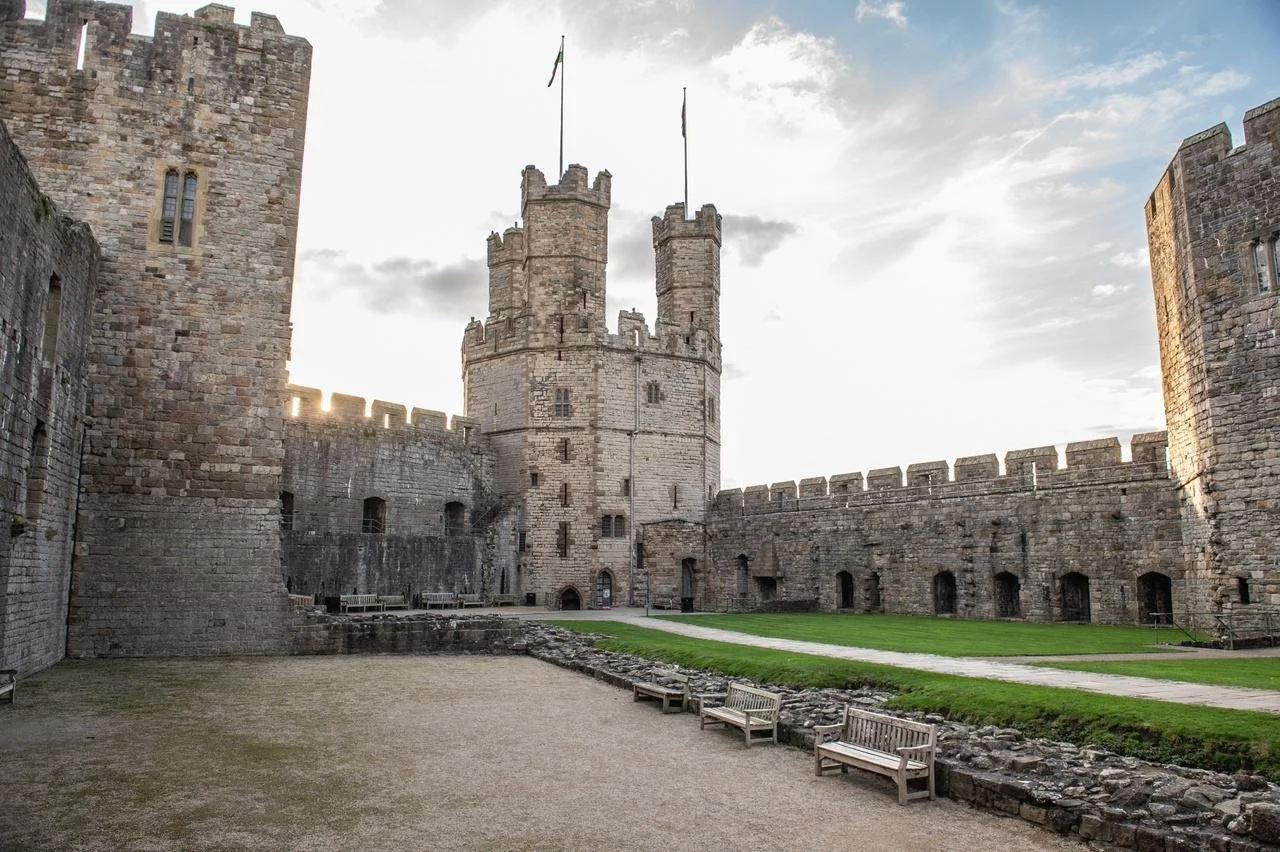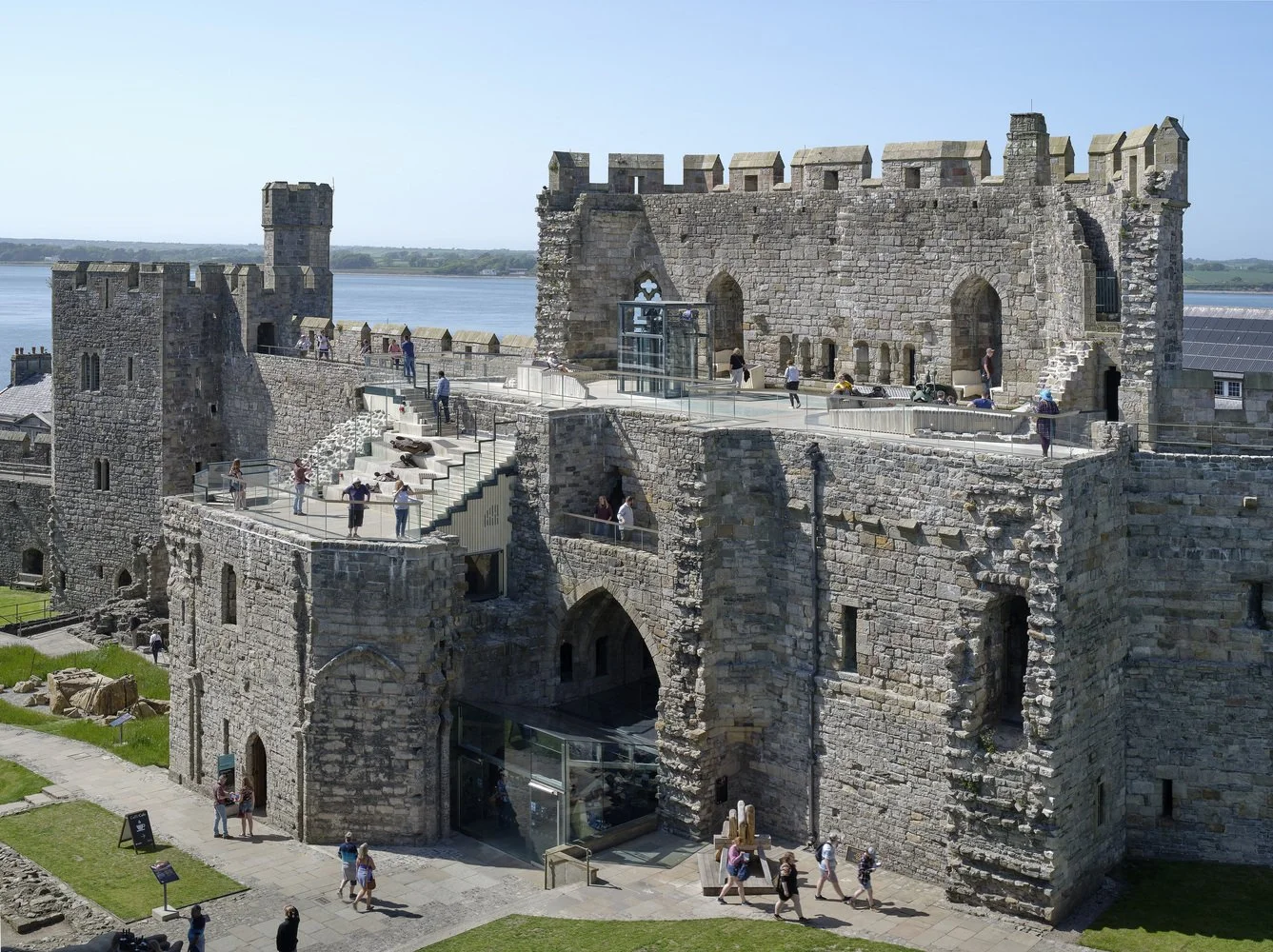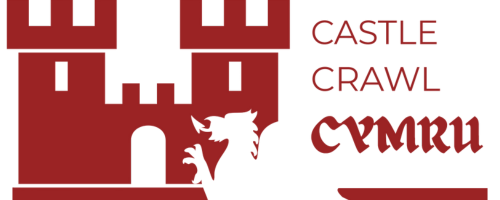Caernarfon Castle | Visit Amazing Welsh Castles
Caernarfon Castle stands on the banks of the River Seiont in North Wales. It is one of the most architecturally significant castles built by Edward I in the 13th century.
The castle forms part of the wider “Iron Ring” of fortresses constructed to establish English dominance in Wales. Its polygonal towers, banded stonework, and strategic location make it a unique example of medieval military architecture.
The castle is now a UNESCO World Heritage Site and a popular destination for visitors interested in Welsh and British history. Caernarfon Castle also holds ceremonial significance, as it was the site of the 1969 investiture of Charles, Prince of Wales.
Quick Facts
Location: Caernarfon, Gwynedd, North Wales
Built by: Edward I of England
Construction began: 1283
Architect: Master James of St George
Type: Concentric castle with polygonal towers
Materials: Limestone and sandstone
UNESCO World Heritage Site: Since 1986, as part of the Castles and Town Walls of King Edward in Gwynedd
Managed by: Cadw (Welsh Government’s historic environment service)
Language note: "Caernarfon" is the Welsh spelling; "Carnarvon" is the anglicised version sometimes seen in older texts
Brief History
Edward I began construction of Caernarfon Castle in 1283 during his campaign to conquer Wales. The castle was part of a broader strategy that included a network of fortifications across North Wales. Caernarfon was built on the site of a former Roman fort known as Segontium, linking the structure to imperial power and symbolism.
The design reflected Edward’s intention to assert dominance. Inspired partly by the Walls of Constantinople, the castle featured polygonal towers and coloured bands of stone. Its impressive walls were designed not just for defence but also to intimidate.
Work on the castle slowed after 1330. It was never fully completed. However, its political and military functions remained important throughout the medieval period. The castle withstood several attacks, including during the Welsh rebellion led by Owain Glyndŵr in the early 15th century.
In 1969, the investiture of Prince Charles as Prince of Wales took place at the castle. This modern event renewed the site's public and ceremonial role.
Features and Layout
Caernarfon Castle has a unique structure compared to other Edwardian castles. It follows a polygonal design rather than circular towers, with thick curtain walls and a strong defensive layout. The castle’s towers are multi-angled and contain spiral staircases and chambers used for storage, defence, and accommodation.
The King’s Gate was intended to be the castle’s grand entrance. It contains a sequence of murder holes, arrow loops, and multiple portcullises. Although never fully completed, it still shows how advanced Edwardian military planning had become.
The Eagle Tower is the largest and most famous. It features three turrets and a statue of an eagle at its peak, symbolising imperial Rome. This tower likely housed royal apartments.
The castle was built alongside a fortified town, with walls connected to the structure itself. This integration allowed for better defence and control over the local population.
Did You Know?
Inside the Eagle Tower, visitors can still find 13th-century graffiti carved into the stone walls—evidence of medieval life inside the fortress.
Images




Legends and Stories
Caernarfon Castle features in several local legends and accounts tied to its symbolic role in Welsh and English history.
One of the most frequently told stories surrounds the investiture of the Prince of Wales. According to a 16th-century account, Edward I presented his newborn son to the Welsh people at Caernarfon and declared, "Here is your Prince, born in Wales, who can speak no word of English." This story is likely apocryphal but has become part of the castle’s popular history.
Another tradition links the castle to the myth of Macsen Wledig (Magnus Maximus), a Roman Emperor featured in the Mabinogion, a medieval Welsh collection of stories. The castle’s Roman-style design may have been intended to reinforce that connection.
On TripAdvisor, visitors have also mentioned unusual sightings and eerie feelings within the darker towers and corridors, especially the upper chambers of the Eagle Tower. While not officially documented, these accounts add a layer of folklore to the site.
Visiting
Opening Times (Cadw heritage site):
1 March – 30 June: 09:30 – 17:00 (last admission 16:30)
1 July – 31 August: 09:30 – 18:00 (last admission 17:30)
1 September – 31 October: 09:30 – 17:00 (last admission 16:30)
1 November – 29 February: 10:00 – 16:00 (last admission 15:30)
Closed on 24, 25, 26 December and 1 January.
Ticket Prices (Summer: 1 June – 31 August) :
Adult £15.20
Junior (5–17) / Student £10.60
Senior (65+) £13.60
Family (2 adults + up to 3 children) £48.70
Free for Cadw members, disabled person + companion, benefit holders (£1 ticket)
Booking & Entry
Purchase tickets on arrival or book online up to 24 hours in advance. Booking gives a 5 % discount and is non‑refundable.
Directions & Transport
By car: Accessible via A55 Junction 9/A487. Town pay‑and‑display parking on the waterfront.
By public transport: Nearest station Bangor (~10 miles) with local bus services to Caernarfon.
Facilities
Café kiosk (daily from 28 April 2025), King’s Gate café open weekends until end of September Cadw
Visitor centre, toilets, baby‑changing, portable induction loop, exhibition, gift shop, Royal Welch Fusiliers Museum (included in admission)
Terrain is strenuous (uneven, steep staircases) – see Cadw access guide
Assistance available on request; narrow spiral stairs mean evacuation support should be arranged in advance
Dog Policy
Only assistance dogs are allowed on site. Other dogs are not permitted.
Nearby Attractions
Here are notable places to visit near Caernarfon Castle:
Royal Welch Fusiliers Museum
Located within the castle, it covers over 300 years of regimental history, including Victoria Crosses and literary connections.
Welsh Highland Railway
A heritage steam railway departing adjacent to the castle. Ideal for scenic trips into Snowdonia.
Galeri Caernarfon (Arts Centre)
A modern cultural hub offering cinema, live performances, gallery exhibitions, and a harbour-view cafe.
Black Boy Inn
A 16th-century pub and hotel just outside the castle walls. Known for its character, local ales, and ghost stories.
Aber Swing Bridge (Pont yr Aber)
A pedestrian swing bridge connecting the town centre with the castle forecourt. Originally opened in 1970.
Visitor Tips
Arrive early to avoid queues, especially during summer and school holidays
Wear sturdy shoes, the stone stairs and towers are steep and uneven
Book online for a 5% discount and easier entry
Bring a camera, views from the towers and along the walls are extensive
Only assistance dogs are permitted, so plan pet care in advance
Check for tours at the gatehouse, they're optional but informative
Visit the gift shop for Welsh books, castle-themed toys, and locally made gifts
Pack light, bags are allowed but carrying them up narrow stairs is difficult
Check accessibility info before arriving if mobility is limited
Use the King’s Gate café for refreshments and views over the town square
FAQs
-
Most visitors spend between 1.5 and 2.5 hours exploring the castle, its towers, and the museum. Guided tours may extend your visit by about 45 minutes.
-
Partially. The castle grounds and some exhibitions are accessible, and a lift has been installed in King’s Gate. However, many towers and staircases are not accessible due to steep, narrow steps. Cadw provides an access guide online.
-
No. Picnics are not permitted within the castle walls. You can eat outside in the surrounding public areas or use the on-site café facilities.
-
Yes. Custodian-led tours run on selected days at 11:00 and 15:00. Each lasts about 45 minutes and costs £5 per person in addition to your entry ticket.
-
Late spring and early autumn offer fewer crowds and mild weather. Summer months are busiest. Winter visits are quieter but have shorter opening hours.
Wrapping it Up
Caernarfon Castle is one of the most significant medieval fortresses in Britain. Built to project English authority in Wales, its architecture, size, and layout reflect military planning and symbolic power. Visitors today can explore its towers, gates, and exhibitions, including the Royal Welch Fusiliers Museum. Whether you're interested in history, architecture, or scenic views, the castle offers a detailed insight into the medieval past and its lasting legacy.
Sources
LatLong.net
Provided precise coordinates (latitude 53.139118, longitude -4.277065) for Caernarfon Castle.
https://www.latlong.net/place/caernarfon-castle-wales-33476.htmlCadw official page
Confirmed summer 2025 ticket prices, seasonal pricing from September 2025, accessibility options, and visitor facilities.
https://cadw.gov.wales/visit/places-to-visit/castell-caernarfonWikipedia & related –
Verified UNESCO designation in 1986, Edward I’s construction from 1283–1330, symbolism, and ongoing management by Cadw.
https://en.wikipedia.org/wiki/Caernarfon




The castle was built on the site of a medieval fortified manor, the current structure was designed by architect Thomas Hopper for the wealthy Pennant family.